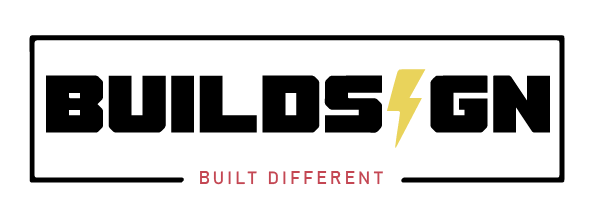Web design isn’t just about pretty layouts – it’s about how a website performs. Website performance has become the new face of good design. A site that loads quickly, responds smoothly, and works well for everyone leaves a far better impression than one bogged down by slow speeds or clunky pages. Users today have little patience for slow websites. If a page takes too long to load or doesn’t display properly on their device, they’ll simply leave. Good design now means building sites that are not only visually appealing but also fast, responsive, and accessible.
Speed and User Experience
Speed is a critical component of user experience. Studies show that visitors start abandoning a website if it takes more than about 3 seconds to load. Think about that – just a few moments of delay and you could lose a large chunk of your audience before they even see your content. In the online world, convenience is king: people expect instant gratification. A slow, laggy site feels like a poorly designed experience, no matter how nice it looks. On the other hand, a fast-loading site immediately signals professionalism and reliability. It keeps users engaged and prevents frustration.
Performance directly impacts how users interact with your site: – Lower Bounce Rates: When pages load quickly, users are more likely to stick around instead of bouncing back to search results. – Higher Conversions: Even a 1-second delay in page loading can cause about a 7% drop in conversions. A slow site could be losing sales because impatient visitors give up. – Better User Retention: Fast sites give a smooth experience that encourages visitors to explore more and come back. No one is eager to return to a site that frustrated them with slowness.
Performance as an SEO Advantage
Website performance isn’t just about pleasing users – it also pleases search engines. Google has made it clear that faster, high-performance websites have an edge in search rankings. In fact, a high-performance website tends to rank higher on Google, bringing in more organic traffic. Google’s reasoning is simple: it wants to deliver the best experience to searchers. If your site is fast and user-friendly, it’s considered a better result to show.
Additionally, performance can affect how efficiently Google can crawl your site. Faster load times and clean code mean Google’s bots can scan more pages in the same amount of time, which can help more of your content get indexed. In short, performance optimization is an SEO strategy. By improving loading speed and responsiveness, you’re not only delighting visitors but also signaling to Google that your site offers quality (and Google loves sites that users love).
Responsive Web Design and Accessibility
Another pillar of “good design” today is responsive web design – ensuring your website looks and functions great on all devices (desktop, tablet, and especially mobile). A site that isn’t mobile-friendly is essentially unfinished. With so much traffic coming from mobile devices, it’s crucial that your pages load fast and display correctly on smaller screens. Responsive design isn’t just about layout; it also means optimizing images and code for mobile to keep load times quick.
Accessibility is equally important. An accessible website is designed so that all users, including those with disabilities, can use it without barriers. This is a core aspect of good design in 2025 and beyond. For example, if images have proper text alternatives (alt text) and your site can be navigated via keyboard or screen reader, more people can interact with it. Not only is this the right thing to do, but it also expands your potential audience. A stunning 71% of customers with accessibility needs will leave a website that they find difficult to use. By following accessibility best practices (like sufficient color contrast, readable fonts, and clear calls-to-action), you make your site usable for everyone. Plus, accessible design overlaps with SEO – for instance, adding alt text on images helps both screen readers and search engines understand your content.
Design Tips for a High-Performance Website
Integrating performance into design means making smart choices from the start. Here are a few tips to ensure your website is both beautiful and fast: – Optimize Images and Media: Use modern, compressed image formats (JPEG/WebP) and avoid overly high-resolution images. Load videos only when necessary. Large media files are often the biggest culprits in slow pages, so optimize them to improve speed. – Minimize Code and Scripts: Excessive JavaScript or too many plugins can drag down performance. Keep your codebase lean by removing unnecessary scripts and plugins. Clean, efficient code loads faster. – Leverage Browser Caching and CDNs: Take advantage of browser caching so returning visitors load pages even faster. Using a Content Delivery Network (CDN) uses servers around the world to deliver content from a location near each user, speeding up load times. – Prioritize Above-the-Fold Content: Use techniques like lazy loading so off-screen images or videos don’t hold up the initial render. This ensures users see useful content within the first moments of landing on a page. – Test and Refine: Make performance testing part of your process – even small tweaks (like optimizing an image or a script) can make the site snappier. Tools like Google PageSpeed Insights or Lighthouse can help identify bottlenecks, but continue to monitor and refine over time.
Conclusion: Performance Is Design
In modern web projects, a visually stunning site means nothing if it frustrates users with slow performance. The new standard of good design demands that sites be fast, responsive to different devices, and accessible to all users. By embracing website performance as a design priority, you create a better user experience for everyone and set your brand up for success in both user satisfaction and SEO.
Is your website delivering the performance and experience your users expect? At BuildSign, we specialize in designing high-performance websites that look great and load lightning-fast. Get in touch with our web design experts to boost your site’s speed, responsiveness, and user engagement.




This is a fantastic blog. Worth read.
Thank you so much.